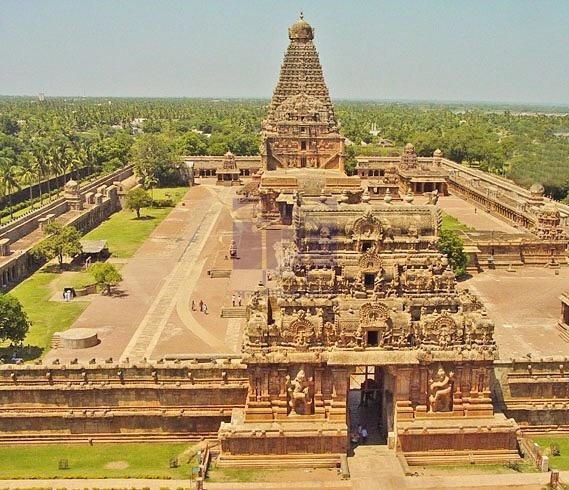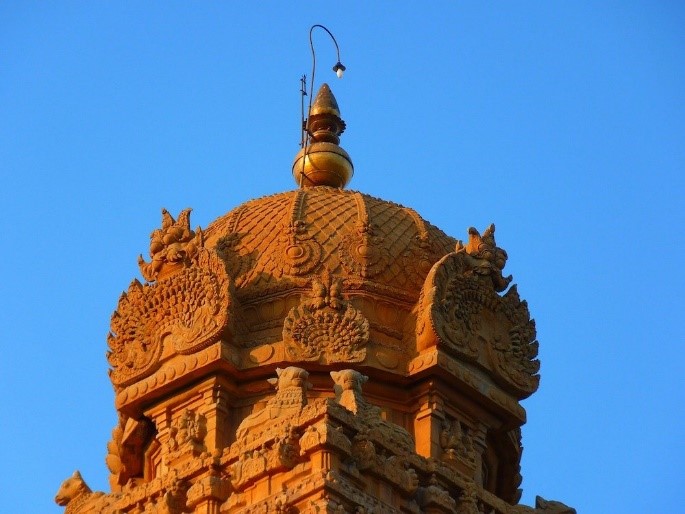An architectural wonder and the glorious past: Brihadeeshwara temple

India is a land of architectural wonders, be it palaces, temples, or monuments that have been standing still for thousands of years. One such place is the Brihadeeshwara temple in Thanjavur. The district of Tanjavur comes in Tamilnadu, the southern part of India. Brihadeeswara temple is also known as Peruvudaiyar kovil, Rajrajeshwara, and Rajrajeshwaram temple. This magnificent temple was built by Raja Raja Chola 1 in the year of 1010 AD. Initially, the temple was known as Rajarajeshwaram temple after the name of its builder but later it became known as Thiru Peruvudaiyar- the ‘Great Lord’ in Tamil which means ‘Brihat-Ishwar’ in Sanskrit. The temple became known as ‘Brihadeeshwara temple.
The temple is one of the most famous tourist destinations due to its architectural splendor and carving marvel. It is UNESCO World Heritage Site, represents terrific capabilities of craftmanship in that era throughout the premise. Undoubtedly, it fills the tourists with an overwhelming experience. The Chola dynasty was said to be ardent devotees of Shiva, so Rajaraja 1 built this temple dedicated to Shiva.

This magnificent structure is also known as the ‘Great Living Chola temple’, is standing at the bank of the Kaveri River. There are many surprising facts associated with its construction that leave us to wonder how it would have been possible at that time. The first one is the use of Granite which is not found in this or nearby area and the whole structure has been erected without the use of any mortar or adhesive but built with an interlocking system. Usually, the temples in India can be classified into three types based on their artisan- the Nagara style, Dravidian style, and Vesara style. Brihadeeshwara temple is a wonderful example of Dravidian architecture. The temple plan consists of Garbhagriha, ardhmandapa, Mahamandapa, Mukhmandapa and Nadi shrine. In the Garbhgriha, there is a big Shiv linga.
The most stunning aspect of the temple is the spectacular ‘Vimana’ which is called ‘Dakshin Meru’, the abode of Shiva. The Vimana is 200 feet high with thirteen stories; the base is significantly wide to bear the weight of its numerous tiers. The structure of the Vimana looks like a pyramid with its tiers decreasing in size from bottom to top. The ‘Stupika’- the dome structure is awe-inspiring as it is an enormous block of stone weighing over 80 tons. It is worth contemplating how this block was carried to that height at that time. At the top, there is a gold-covered Kalash which signifies the end of the construction of the temple.

Around the main temple, there are shrines of other deities- Ganesh, Subramanya, Chandikeshwara, Nandi, Natraja mandapam, and Karuvar Devar mandapam. In the Garbhgriha, the entire passage is full of Chola murals and Nayaka paintings which represent the artistic excellence of that era. The incredible architectural excellence and the glorious regime of Chola kings compel us to believe that the construction of the temple had been possible with the wish of Shiva Himself. While visiting the southern part of India, Brihadeeshwara temple must be on the top of one’s ‘places to see’ list.